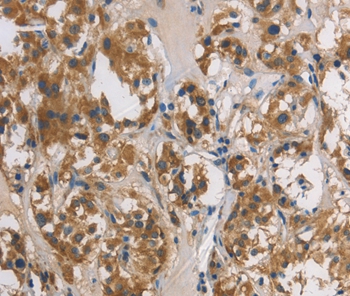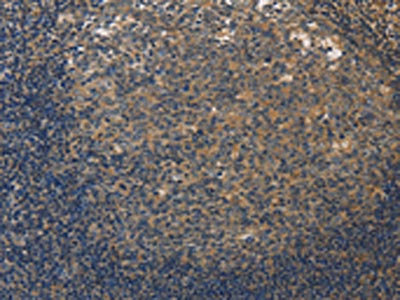DUSP26 antibody [N1C1]
GTX109283
ApplicationsImmunoFluorescence, ImmunoPrecipitation, Western Blot, ImmunoCytoChemistry
Product group Antibodies
ReactivityHuman, Mouse, Rat
TargetDUSP26
Overview
- SupplierGeneTex
- Product NameDUSP26 antibody [N1C1]
- Delivery Days Customer9
- Application Supplier NoteWB: 1:500-1:3000. ICC/IF: 1:100-1:1000. *Optimal dilutions/concentrations should be determined by the researcher.Not tested in other applications.
- ApplicationsImmunoFluorescence, ImmunoPrecipitation, Western Blot, ImmunoCytoChemistry
- CertificationResearch Use Only
- ClonalityPolyclonal
- Concentration1.52 mg/ml
- ConjugateUnconjugated
- Gene ID78986
- Target nameDUSP26
- Target descriptiondual specificity phosphatase 26
- Target synonymsDSP-4, DUSP24, LDP-4, LDP4, MKP-8, MKP8, NATA1, NEAP, SKRP3, dual specificity protein phosphatase 26, MAP kinase phosphatase 8, Novel amplified gene in thyroid anaplastic cancer, dual specificity phosphatase 26 (putative), dual specificity phosphatase SKRP3, low-molecular-mass dual-specificity phosphatase 4, mitogen-activated protein kinase phosphatase 8, neuroendocrine-associated phosphatase
- HostRabbit
- IsotypeIgG
- Protein IDQ9BV47
- Protein NameDual specificity protein phosphatase 26
- Scientific DescriptionInactivates MAPK1 and MAPK3 which leads to dephosphorylation of heat shock factor protein 4 and a reduction in its DNA-binding activity. Inhibits MAP kinase p38 by dephosphorylating it and inhibits p38-mediated apoptosis in anaplastic thyroid cancer cells. Can also induce activation of MAP kinase p38 and c-Jun N-terminal kinase (JNK).
- ReactivityHuman, Mouse, Rat
- Storage Instruction-20°C or -80°C,2°C to 8°C
- UNSPSC12352203
References
- Kikuchi S, Wada A, Kamihara Y, et al. DPP8 Selective Inhibitor Tominostat as a Novel and Broad-Spectrum Anticancer Agent against Hematological Malignancies. Cells. 2023,12(7). doi: 10.3390/cells12071100Read this paper
- Eroglu B, Jin X, Deane S, et al. Dusp26 phosphatase regulates mitochondrial respiration and oxidative stress and protects neuronal cell death. Cell Mol Life Sci. 2022,79(4):198. doi: 10.1007/s00018-022-04162-zRead this paper
- Qiao X, Zhu Y, Dang W, et al. Dual-specificity phosphatase 15 (DUSP15) in the nucleus accumbens is a novel negative regulator of morphine-associated contextual memory. Addict Biol. 2021,26(1):e12884. doi: 10.1111/adb.12884Read this paper
- Yang CH, Yeh YJ, Wang JY, et al. NEAP/DUSP26 suppresses receptor tyrosine kinases and regulates neuronal development in zebrafish. Sci Rep. 2017,7(1):5241. doi: 10.1038/s41598-017-05584-7Read this paper
- Kim H, Lee HJ, Oh Y, et al. The DUSP26 phosphatase activator adenylate kinase 2 regulates FADD phosphorylation and cell growth. Nat Commun. 2014,5:3351. doi: 10.1038/ncomms4351Read this paper






